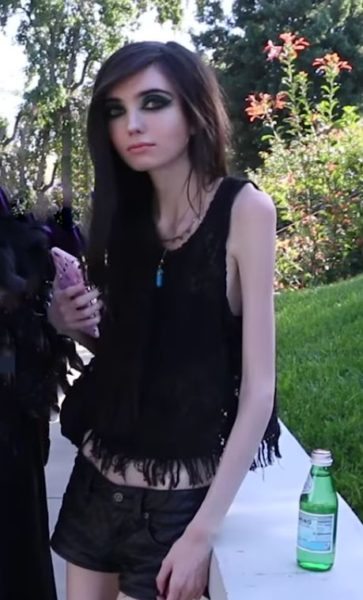In The Critic, Tom Farr wonders about the wider meaning of the Eugenia Cooney story:
Journalist and author Mandy Stadtmiller shared a new article last week on her excellent Substack series Rabbitholed entitled: “Why is Jeff Bezos Allowing Millions of Teenage Girls to Watch the Severely Anorexic Influencer Eugenia Cooney Slowly Kill Herself On Stream?”
The article itself received widespread attention for its harrowing coverage of the story of Eugenia Cooney, a 20-something Twitch streamer and YouTuber, who has built a global fanbase off vlogs featuring her cosplaying, and giving makeup and beauty tips amongst other things, as well as her distinctive early 2000s emo aesthetic.
Cooney is also severely anorexic. As Stadtmiller’s article succinctly explains:
Cooney’s horrific skeletal appearance is documented lavishly by her sick and enabling mother, Debra Cooney, who is seemingly keeping her daughter trapped and isolated at home with almost no contact with the outside world outside of the online predatory men who pay her daughter tips to spin around, crawl around on the floor, act like a cat and show how weak she is when trying to lift things.
Whilst Cooney’s story warrants attention, that isn’t the purpose of this article. In order to understand fully the social apparatus that allows and encourages Cooney’s mother to disturbingly parade her young daughter around for tens of thousands of digital voyeurs, no better explanation can be found than the one that actually answers Stadtmiller’s original question: Just why is Jeff Bezos allowing millions of teenage girls to watch Eugenia Cooney slowly kill herself on stream?
Whilst Jeff Bezos could and should be skewered for his role in amassing grotesque, Scrooge McDuck levels of wealth at the expense of anyone with the temerity to want to use the toilet during their working hours, in this instance he is merely a symptom of a deeper rot that has taken hold of our society, aided in part by the explosion of the internet in the late 90s.
Sir Tim Berners-Lee, the founder of the World Wide Web, once said: “When something is such a creative medium as the web, the limits to it are our imagination.” Berners-Lee was not wrong, but it would be unfair to stick him with the responsibility for what the depraved depths of some individuals’ “imagination” have conjured up in the subsequent decades since the web’s mass adoption.
Those of us who grew up in the 90s and early 2000s — ostensibly the first generation to be exposed from an early age to the internet in its more rudimentary form – will surely remember the sporadic emergence of individual “shock videos”: from the fairly benign (“Meatspin”, anyone?) to videos of murder (“Three Guys One Hammer”), the internet was a developing digital territory that its early adopters were still testing the limits of. These videos were occasionally linked to entire websites that would host videos depicting varying degrees of degeneracy, but they operated mainly in the darker corners of the web, reliant on people sending links to each other on MSN with a description that would lull the recipient into a false sense of security in order to get them to click on it.
Such content ran, if not explicitly then certainly conceptually, parallel to another early-2000s meme: Rule 34. In short, Rule 34 stated: “Rule #34 There is porn of it. No exceptions.” It doesn’t really require Einstein’s intellect to parse what was meant by this aphorism: as the porn industry was finding its footing in the new digital age, the type of pornographic content that was readily available was also breaking new ground. Initially, those shock videos existed in a slightly separate orbit to that of more mainstream pornography, but their intersection was by no means a rarity, even in those early days. This somewhat grimly operates as the perfect example of Berners-Lee’s observation that the creativity fostered by the internet is only constrained by our collective imaginations.




